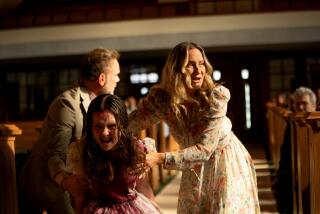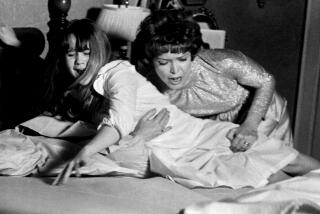Tracing the History of Exorcism
- Share via
Exorcism’s roots reach back to New Testament accounts of Jesus casting out evil spirits. As centuries passed, exorcism was gradually relegated to Christianity’s back burners. Martin Luther used exorcism, but other Protestants rejected the idea as superstitious. By 1600, the practice had all but died out among Protestants, says historian Jeffrey Burton Russell.
American evangelicals revived exorcism in the early 1900s. But it didn’t really take hold until the 1970s, when the charismatic movement swept through mainline Protestant and Catholic churches, bringing an emphasis on spiritual healing, speaking in unknown tongues and a belief in the palpable presence of evil spirits. The latter helped propel the widespread practice of exorcism.
When “The Exorcist” opened in theaters across the country in 1973, psychologists and ministers were deluged with calls from people who believed friends or loved ones to be possessed. The hysteria wore off, but interest in the devil continued.
During the 1980s, the world’s largest interdenominational seminary--Pasadena’s Fuller Theological--offered a how-to exorcism course for future pastors. The class was later dropped amid controversy about its content, but a different version is now on the drawing board.
More to Read
Sign up for Essential California
The most important California stories and recommendations in your inbox every morning.
You may occasionally receive promotional content from the Los Angeles Times.













